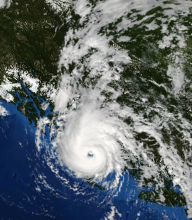| Category 3 hurricane (SSHWS) | |
| Duration | July 12 – July 30 |
|---|---|
| Peak intensity | 120 mph (195 km/h) (1-min) 945 mbar (hPa) |
Hurricane Kenneth, aka "The Great Alaska Hurricane" was a category 3 hurricane that hit the inside passage.
Meteorological History[]
Formation and "dissipation"[]
Kenneth originated from a typical depression that formed off the coast of Manzanillo on July 12. It moved in a northwesterly fashion, like a normal Pacific Hurricane, and peaked as a category 3 on July 15. It then slowly lost strength, weakening to remnants on July 20. The NOAA stopped tracking the storm.
Reformation[]
On July 25, the NOAA was alerted of a depression that was forming very far north from where storms typically form, equal to the coast of Washington. After some research, the NOAA confirmed that these were the remnants of Kenneth, and it was reforming. It was originally forecast to make landfall in Seattle as a TS. However, the storm began to rapidly gain strength. Due to record high water temperatures and global warming effects, Kenneth re-attained hurricane status on July 26, and curved northward. The NOAA then realized that Kenneth was headed directly for southern Alaska, the inside passage.
Landfall[]

Kenneth over the Inside Passage on July 28.
Kenneth made landfall in the passage on July 27, as a strong, defined category 2 hurricane. It began to increase speed, moving northwest parallel to the passage. Due to Kenneth's size, the entire passage was covered by Hurricane to Tropical Storm-force winds. As Kenneth moved through the passage, it's strong winds caught several ships sailing through the passage, who were forced to anchor to avoid crashing. It also caught several major Alaskan cities by surprise, resulting in about 180 fatalities, and $1 billion in damage.
True Dissipation[]
After Kenneth moved through the Passage, it then moved out to sea, and dissipated for real. It's remnants brought rainfall to some of the outlying islands.
Retirement[]
Due to Kenneth's extreme impact in Alaska, the name Kenneth was retired and replaced with Kaden in the 2035 season.


